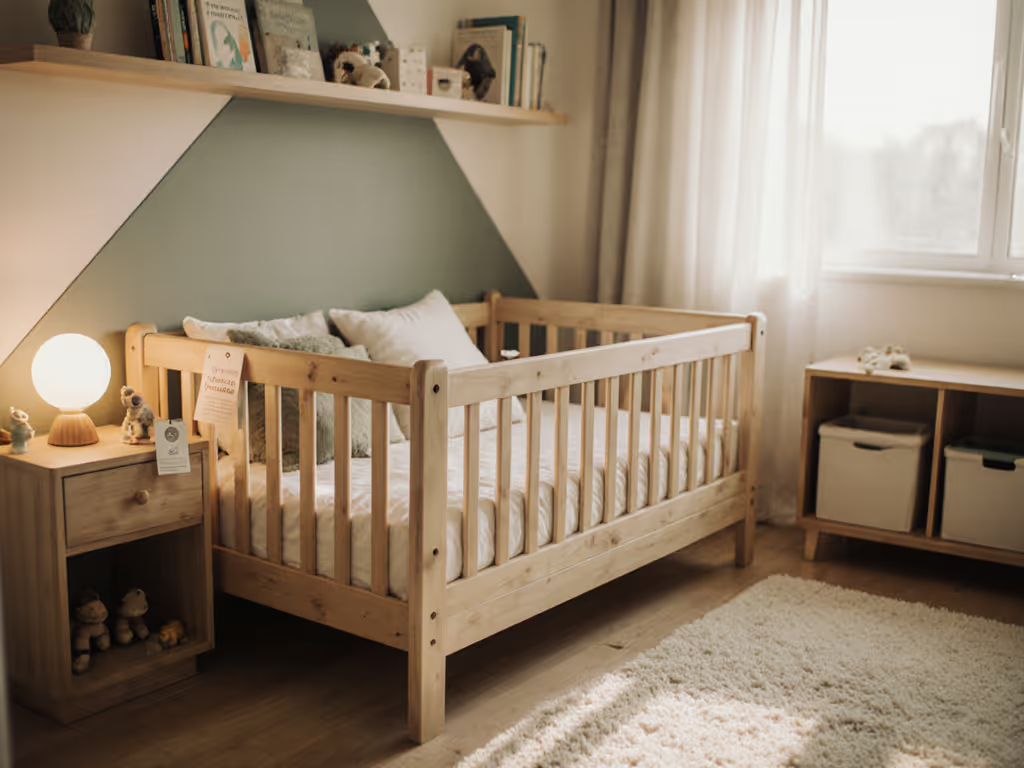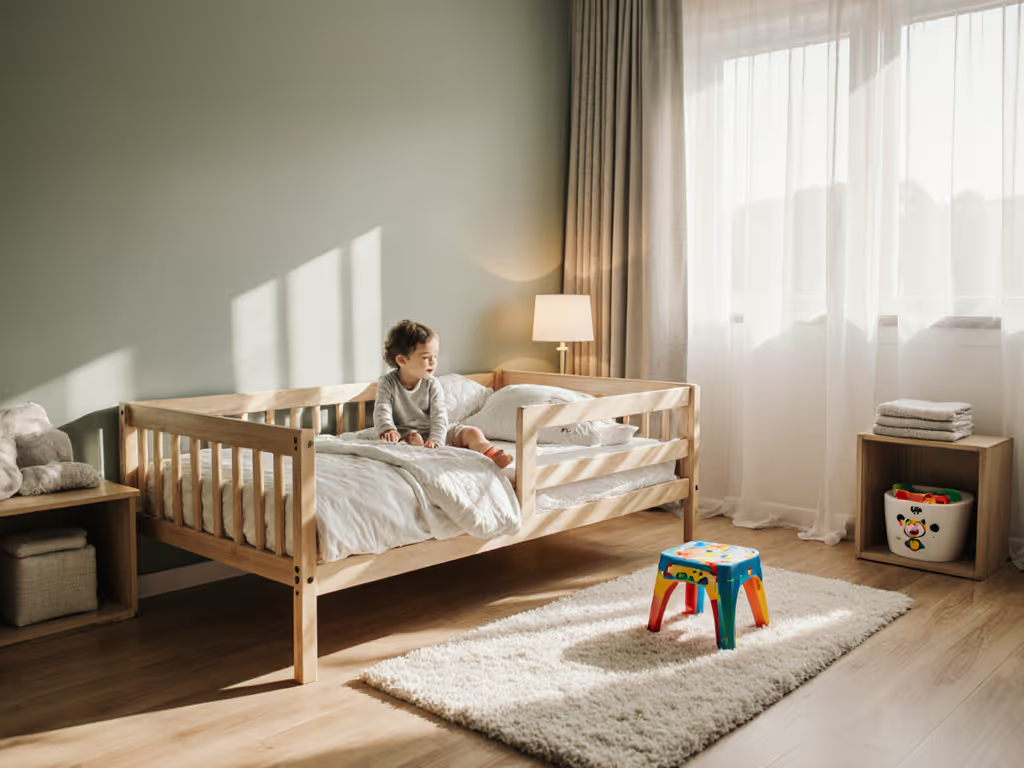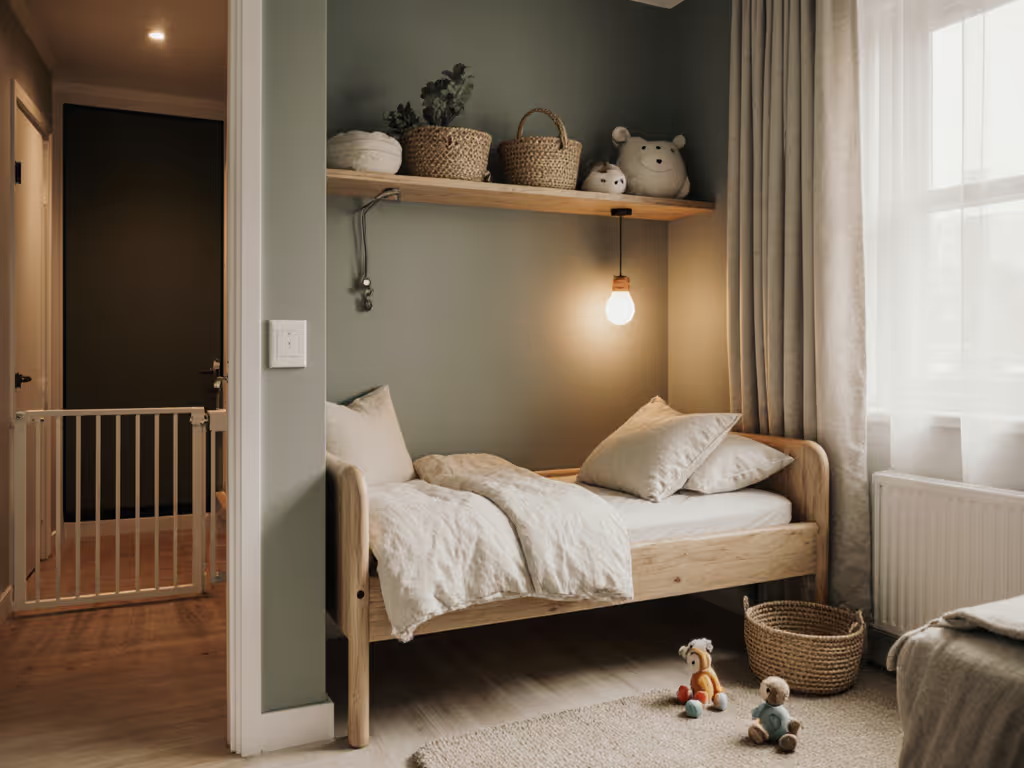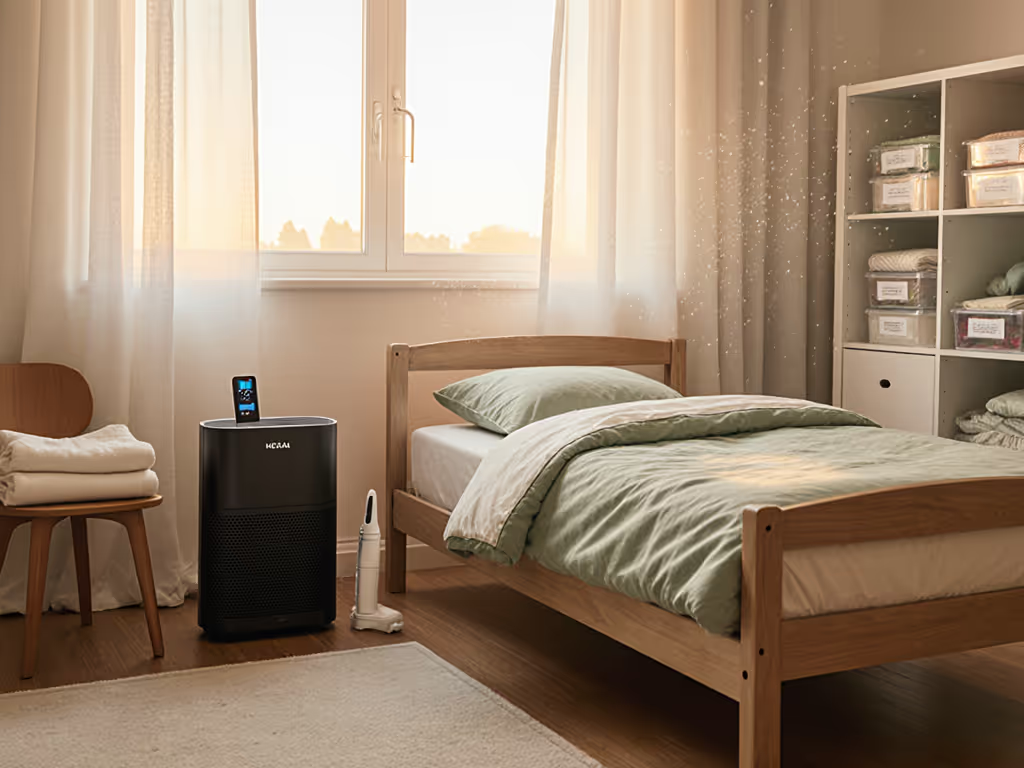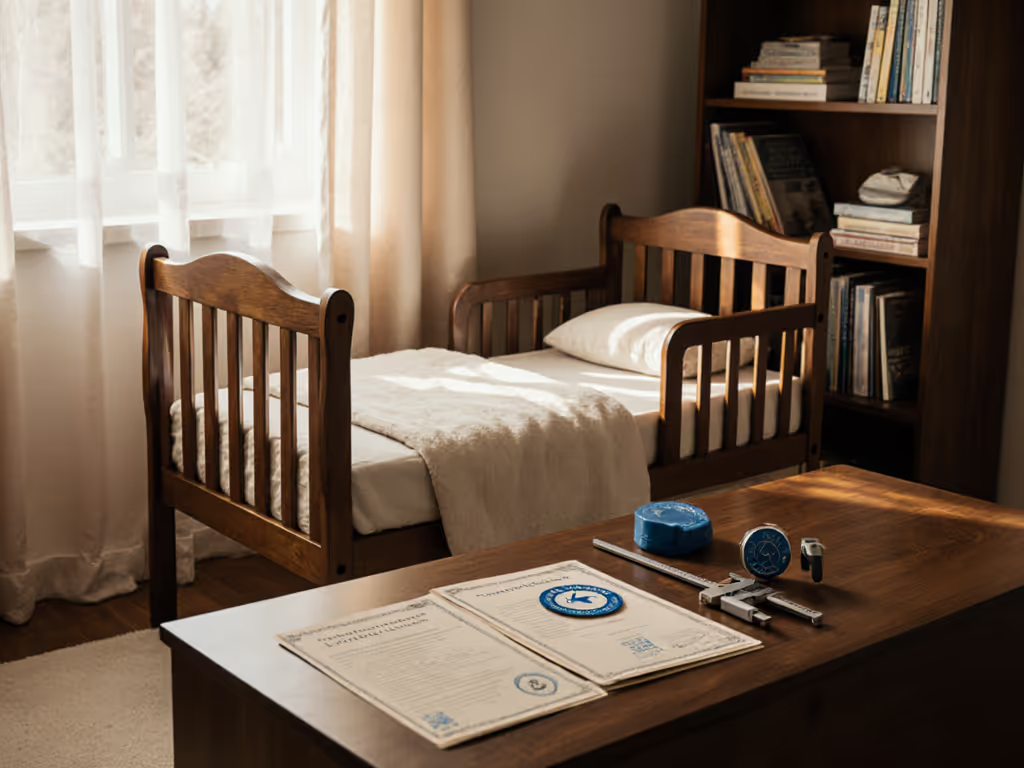
Toddler Bed Safety Certifications Compared: What Actually Matters
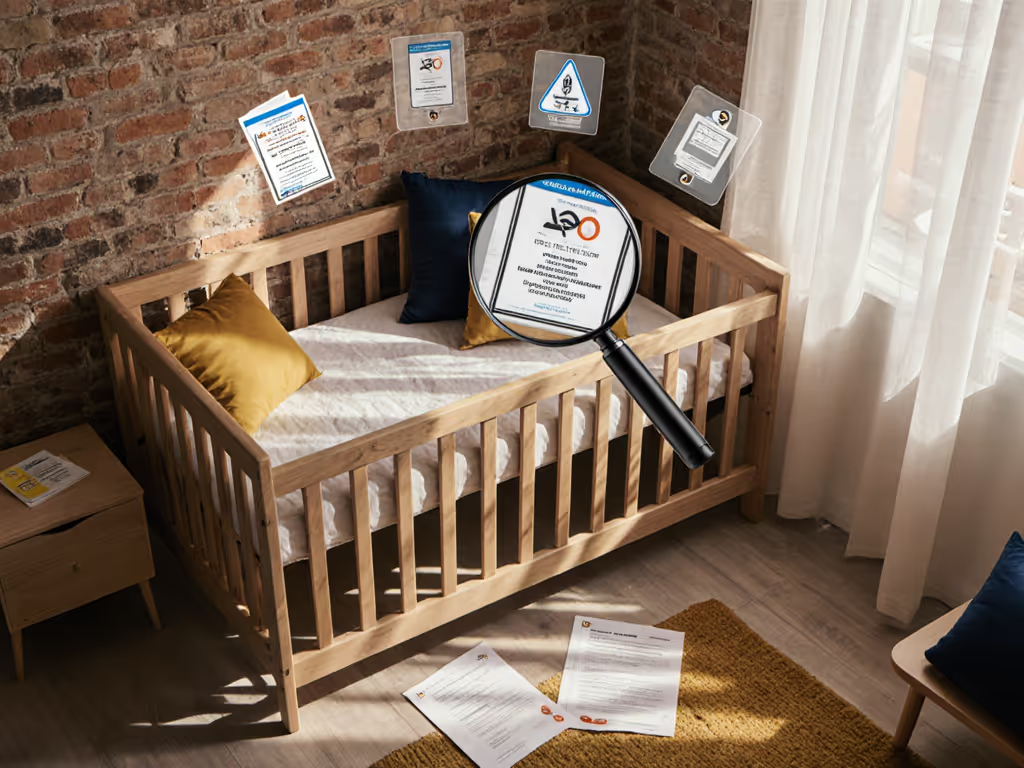
As parents navigate tight urban apartments and micro-bedrooms, toddler bed safety certifications become the unsung guardians against invisible risks. When floor space vanishes, compromised safety margins vanish with it, making verified safety standards your non-negotiable baseline. This isn't about bureaucratic checkboxes; it's about translating decades of accident data into bulletproof design choices for spaces where a wobbling rail could mean a collision with a closet door. Let's dissect what truly matters in certification labels for your compact nursery.
document, don't assume
Why Certifications Are Non-Negotiable in Small Spaces
In a 10x10 room, every inch carries higher stakes. A bed that meets ASTM F1821 standards ensures guardrails can't become leverage points during climbing attempts (a lesson I learned watching a toddler vault a high rail at a playdate, turning it into a dangerous pivot). When rooms force beds against walls or doorways, ASTM toddler bed standards act as your silent safety net through: For a deeper dive into guardrail dimensions and room layout pitfalls, see our toddler bed safety guide on the 5-inch guardrail rule.
- Slat spacing ≤2.375 inches (preventing limb entrapment between rails)
- Guardrail height ≥5 inches above mattress (critical for roll-prone sleepers)
- Stability thresholds requiring beds to withstand 50 lbs of force without tipping
Unlike cribs, toddler beds operate in dynamic environments: kids scale them, kick them, and use them as launchpads. In cramped quarters, CPSC-compliant toddler beds go further by capping lead in paint (90 ppm max) and banning phthalates. These chemical limits matter intensely when off-gassing concentrates in poorly ventilated studios or ADUs.
Decoding the Certification Hierarchy: What's Legally Binding vs. Marketing Fluff
Not all seals are created equal. Here's how to rank them by real-world impact: If you're considering imported or European designs, compare US vs EU toddler bed standards before you buy.
Tier 1: Legally Enforced Standards
- ASTM F1821 (U.S. Standard): The bedrock. Mandates structural integrity tests like lateral force resistance and edge radius checks. Red flag if absent, this is the minimum viable safety net.
- CPSC Compliance: Enforces ASTM limits legally. Requires manufacturers to self-certify but allows CPSC recalls (like the 30+ hazardous beds pulled in 2022). Always verify compliance labels on packaging.
Tier 2: Independent Verification
- Baby Safety Alliance Verified (formerly JPMA): Triggers annual testing at CPSC-accredited labs. Look for the gold seal, it confirms adherence to ASTM, CPSC, and retailer-specific rules like Target's stability thresholds. This is what you want for "JPMA certified toddler beds" (the rebrand reflects stricter oversight).
- GREENGUARD Gold: Tests for VOCs (volatile organic compounds) at levels safe for infants. Critical for apartment dwellers where off-gassing lingers, requirements are 10x stricter than standard GREENGUARD.
Tier 3: Material-Specific Certifications
- OEKO-TEX Standard 100: Verifies all textiles (mattress covers, sheet sets) are free of formaldehyde, nickel, and heavy metals. Non-negotiable for kids with eczema or sensitive skin.
- CertiPUR-US: Focuses only on foam components (mattresses, bumpers). Ensures no ozone depleters or carcinogens.

Key Insight:
Many brands trumpet "ASTM-compliant" while omitting whether tests were independently verified. Always pair ASTM with Baby Safety Alliance verification, it closes the gap between manufacturer claims and third-party proof. This is where parents get tripped up: a bed might meet ASTM on paper but fail real-world stability tests in compact layouts where weight distribution shifts dramatically against walls.
The Critical Gaps Most Parents Miss
Certifications rarely address your top pain points in small spaces. Here's where to dig deeper:
Conversion Bed Risks
That "4-in-1 crib" might be ASTM-certified as a crib, but toddler bed conversions often lack guardrail testing. I've measured edge radius on conversion kits hitting 0.25 inches, sharp enough to cause lacerations during falls. Verify the toddler configuration specifically carries certifications. For vetted picks that convert safely in compact rooms, see our best convertible cribs with verified safety. The Delta Children Canton 4-in-1 Crib avoids this trap: its included toddler rail is Baby Safety Alliance Verified, with rounded edges and a low center of gravity critical for stability in tight rooms.
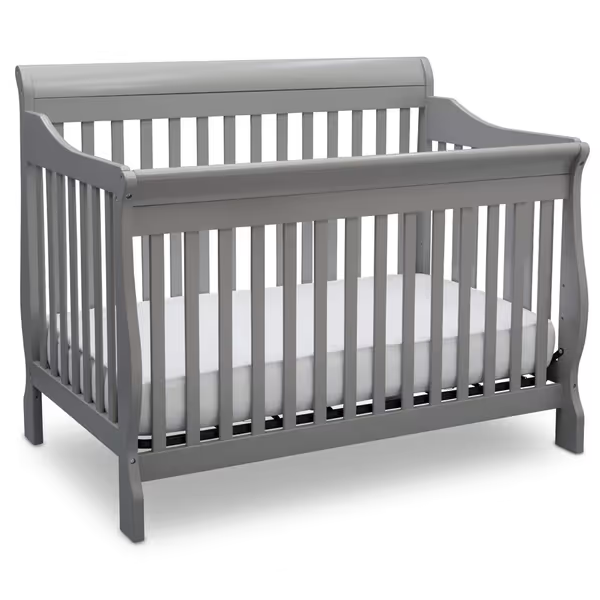
Delta Children Canton 4-in-1 Convertible Crib
Under-Bed Clearance & VOCs
In apartments, storage bins slide under beds, but low clearance (< 5") traps VOCs against mattresses. Cross-check GREENGUARD Gold and physical clearance. For eco-first options with verified low emissions, compare our eco-friendly toddler beds. If a bed claims "low-VOC finish" but lacks VOC disclosure paperwork, assume off-gassing will concentrate in your studio. Request material safety data sheets (MSDS) before buying.
Renter Realities
Landlords rarely allow wall anchoring, yet ASTM assumes beds are anchored. Test stability without brackets: push the rail laterally with 30 lbs of force (simulate a climbing child). If it shifts >1 inch, reject it. Look for beds with wide bases (≤ 3:1 height-to-width ratio) that won't topple when bumped against a closet door. For a full room safety plan—anchoring furniture and taming cords—use our childproofing bedroom guide.
How to Verify Claims Like a Safety Researcher
Don't trust marketing copy. Here's my field-tested checklist:
- Demand the Certificate of Conformity: Legitimate brands provide ASTM/CPSC compliance docs within 48 hours. If they hesitate, walk away.
- Test the Edge Radius: Run a finger along all corners. If it feels sharp (>0.125" radius), it's a laceration risk. Rounder = safer.
- Check Guardrail Rigidity: Shake it laterally. Wobble >0.5" indicates poor anchoring hardware, disastrous in micro-rooms where kids maneuver around tight corners.
- Scrutinize VOC Claims: "Non-toxic" is meaningless. Insist on GREENGUARD Gold or full VOC disclosure reports showing < 0.05 ppm formaldehyde.
This is where parents surrender to marketing, but remember: boring and low beats pretty and risky every time. A bed that passes these checks may lack Instagrammable curves, but its stability will let you sleep through the night knowing your toddler can't turn rails into levers.
Making the Right Choice for Your Compact Space
Prioritize certifications that solve your spatial constraints:
- For studios/ADUs: Baby Safety Alliance Verified + GREENGUARD Gold (ensures safety and air quality in low-ventilation spaces)
- For sibling rooms: ASTM F1821 + OEKO-TEX (prevents chemical sensitivities between children)
- For renters: Focus on intrinsic stability (no anchoring needed) + rounded edges (minimizes injury if bumped against walls)
Reject beds with "proprietary safety features," real safety lives in verifiable standards, not buzzwords. When a product emphasizes how it meets ASTM (e.g., "5.2" guardrail height, 0.3" edge radius"), you've found a keeper.
document, don't assume
Next Steps: Building Unshakeable Confidence
Safety isn't sexy, it's systematically boring. And that's beautiful. Before purchasing:
- Test stability in-store using the 30-lb lateral force rule
- Measure clearance for storage bins before buying
Your peace of mind in a 900-square-foot apartment depends on these details. When certifications are transparent and verifiable, you're not just buying a bed, you're installing a silent guardian for the most vulnerable hours of your child's day.

